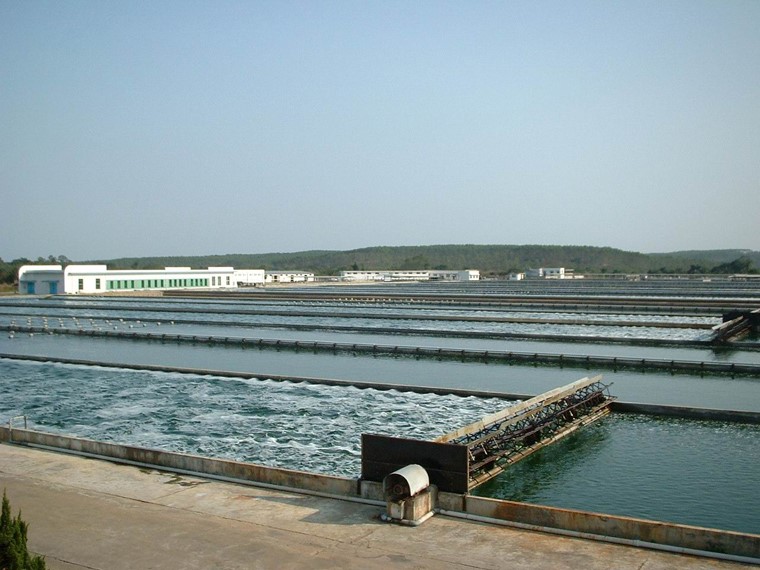The DIC Group’s Spirulina Farms Earn FSSC 22000 Certification —Ensuring safe Spirulina products and providing peace of mind to customers around the world—
- Business & Product
- News Release
Tokyo, Japan–DIC Corporation today announced that on January 23, 2017, wholly owned subsidiary Hainan DIC Microalgae Co., Ltd. earned Food Safety System Certification (FSSC) 22000. Hainan DIC Microalgae manufactures edible algae Spirulina1-based nutritional supplements and Spirulina-derived natural blue food coloring phycocyanin (trade name: Linablue®) on Hainan Island, in the People’s Republic of China. FSSC 22000 is a Global Food Safety Initiative (GFSI) recognized scheme. As a result, all of the Spirulina cultivated by the DIC Group for use in its Spirulina-based products, as well as Linablue®, are now supplied from FSSC 22000-certified facilities.
FSSC 22000 is a comprehensive global scheme for all types of organizations that assesses food safety management systems across the entire supply chain - from development and manufacturing to marketing, sales, transport and storage. With rising consumer concerns for food safety and security, major global food and beverage product manufacturers and retailers with in-house brands increasingly demand that suppliers earn certification.
California-based Earthrise Nutritionals LLC, the DIC Group’s U.S. Spirulina production subsidiary, earned FSSC 22000 certification in July 2016. In 2018, Earthrise Nutritionals is currently expanding its production capacity for Linablue® by building new facilities in accordance with FSSC 22000 standards. Experts in operations, Hainan DIC Microalgae has created a reliable system for ensuring product safety and quality for customers, reinforced facility access management and production floor surveillance to prevent product contamination, and modified the layout of its production floors, thus ensuring qualification for FSSC 22000 certification.
Spirulina continues to earn attention as both a superfood2 and a rich source of vegetable protein. Phycocyanin is the first natural blue food coloring to be approved by the U.S. Food and Drug Administration. With major food product manufacturers in the United States and Europe promoting a shift from artificial to natural food colorings, the demand for phycocyanin is expected to increase dramatically.
In the 1970s, the DIC Group became the world’s first successful commercial producer of Spirulina nutritional supplements and Linablue®. The Group has since leveraged its integrated production capabilities, which encompass everything from the cultivation of high-grade Spirulina to the manufacturing of finished products, to ensure product quality and traceability. Introducing the FSSC 22000 perspective has further strengthened the Group’s food defense framework. As a pioneer of Spirulina-based products, the Group will continue working to ensure the safety and quality of its products and provide peace of mind to its customers.
1.Spirulina is a blue-green algae that is rich in more than 50 vitamins and minerals, including calcium and iron and grows naturally in lakes in Africa and Central and South America. DIC was the first company to succeed in cultivating Spirulina.
2. “Superfood” is a term applied to foods that boast a superb nutritional balance and are richer in nutrients than ordinary foods, or that contain a high level of certain nutrients or constituents offering health benefits. (Source: Japan Superfoods Association)
Hainan DIC Microalgae is a wholly owned subsidiary of DIC. The company produces approximately 350 metric tons of Spirulina annually.
Earthrise Nutritionals is a wholly owned subsidiary based in Irvine, California. Earthrise Nutritionals produces approximately 550 metric tons annually. The company’s outdoor algae cultivation facility is the world’s largest as it covers a total area of 180,000 square meters, Earthrise is the only company in the continental United States to succeed in the mass cultivation of Spirulina outdoors.
—Ends—
*Note: The files are in Adobe Acrobat Format. To view them you will need Acrobat Reader.



